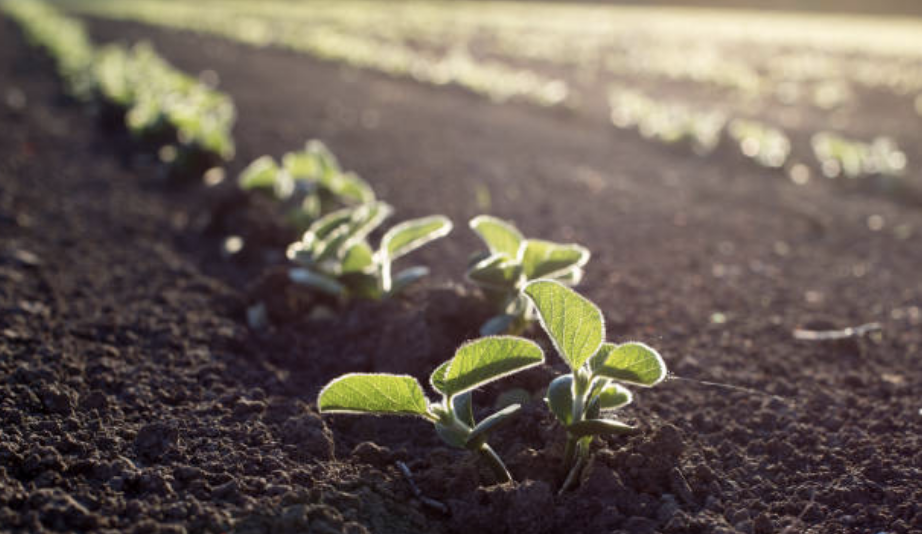How Soybeans Can Help You This Spring

By Andrea Hilderman
Preparing for the 2020 growing season has its challenges due largely to an incredibly ugly 2019 fall. Growers are making final decisions for the upcoming season, so it’s a good time to review the benefits of growing soybeans and determine what they add to the mix.
Experts all advise diversified crop rotations. Tyler Russell, NorthStar Genetics Western Canadian Manager, agrees with all those experts as well. “Diversified crop rotations spread risk and provide growers a sustainable means to maximize returns,” he says. “They also create other benefits including improved disease and weed management. Mono-cropping, or short rotations, are not as robust as a well-diversified crop rotation.”
Growers should run through an exercise to determine why they would want to add soybeans to the crop mix in 2020 taking into consideration a number of factors.
Soybeans are an excellent crop to have in any rotation for a multitude of reasons. “As a nitrogen-fixing crop, soybeans can improve soil health and fertility,” explains Russell. “Additionally, providing they are inoculated according to recommendations, they will fix all their own nitrogen requirements, a considerable expense on any farm.”
Soybeans in 2020 might look even more attractive, as fall 2019 didn’t provide conditions conducive to getting the crop off in places and stalled normal fall fertilization operations. “Growers may tend to add some acres of soybeans depending on the moisture outlook,” explains Daryl Domitruk, Director of Research and Production at Manitoba Pulse and Soybean Growers. “The way it’s shaping up with wet soils at freeze-up, harvest not fully completed and fertilizer not down as yet, soybeans could be an excellent opportunity to get through the spring rush.”
Domitruk goes on to point out that soybeans do well in wet soils. And soybeans like a late-summer rain. “Soybeans will continue to produce yield and not lose quality like our traditional grain crops.”
Saskatchewan and Alberta growers are familiar with peas and lentils, the more traditional pulse crops in their provinces. They bring the same benefits as soybeans with regard to soil health. However, soybeans do bring additional marketing benefits, as well as opportunities to tackle particular disease concerns in those crops, like aschochyta.
Canola is not going to shift its importance in the rotation of Western Canadian farms; however, as diseases like clubroot and blackleg continue to spread, soybeans offer a great alternative to break the rotation and give growers an opportunity to manage these diseases on their farms. Soybeans also provide an opportunity to manage insects like Bertha armyworm and flea beetles.
Soybeans are a relatively low input crop, which is a bonus to anyone new to them, very tolerant of rain and heavy moisture conditions. “Indeed, it was this latter benefit of soybeans that might have launched them in the West,” says Russell. “2004-05 was very wet in Manitoba, and everyone was looking for an option to withstand those conditions. And in 2015 and 2016, Saskatchewan had a very wet year and in 2017, soybean acres jumped.”
Adding soybeans in 2020 also means the grower is adding a mature, globally-traded crop of significant value. “This isn’t a here today, gone tomorrow crop,” says Russell. “Growers can count on a consistent global market. Certain areas might have delivery window restrictions if the crop is very new, but there’ll be no issues finding a price and getting them sold.”
Domitruk echoes Russell again when it comes to the economic factors that favour soybeans. “The soybean supply chain and the players are very large, transparent, and dependable,” he says. “Having a reliable, stable market for a crop reduces grower risk, and it’s a more attractive market to be in. Who hasn’t seen Cinderella crops come and go over the years?”
What additional benefits do soybeans bring to the farm? “This season is shaping up to be one where time is going to be a scarce commodity,” explains Russell. “From a jam-packed spring, where some growers still have to finish harvest, apply fertilizer, AND seed, to a ‘who knows’ for fall, soybeans can provide some wiggle-room in that schedule. They are seeded a bit later than other crops, preferring to go into warm soils. One of their biggest advantages might be putting up with delayed harvests without yield or quality losses.”
Crop rotation helps ensure sustainability. Diversity in your crops helps manage risk. Soybeans are a fantastic fit into your crop rotation and diversifying your crops.



